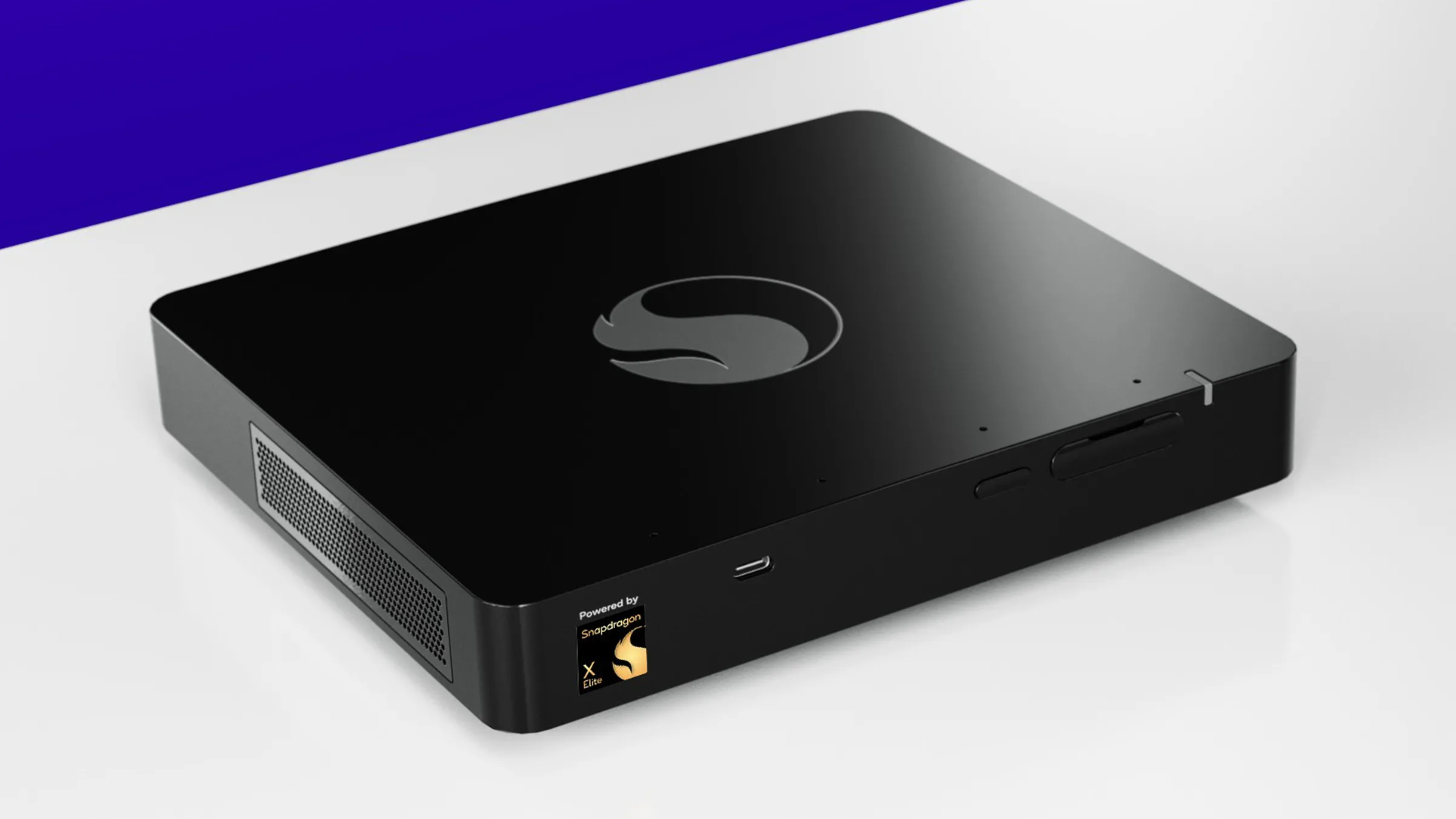Mac mini alternative coming? This Snapdragon Dev Kit points at a future Windows version

Microsoft just unveiled its first Arm-powered laptop based on the Snapdragon X architecture to rival the M3 MacBook Air. Now, Qualcomm has released a Snapdragon Dev Kit that's powered by the same Snapdragon X Elite chipset, and looks set to rival the Mac mini.
It's an 8-inch Windows PC machine aimed at developers with a price tag of $900. After several weeks of rumblings about the power of the Snapdragon X processor line-up, we've finally seen just how powerful the chipsets are. The Dev Kit isn't available for purchase yet, but you can fill out this form with Qualcomm to pre-register.
A Windows Mac mini alternative
Nestled inside this compact black box, roughly the size of Apple’s Mac mini, is Qualcomm’s top-of-the-line Snapdragon X Elite chip. We're talking a beastly 4.6 TFLOP GPU, 32GB of LPDDR5x RAM, and a generous 512GB of NVMe storage. It’s like cramming a sports car engine into a hatchback.
If you were hoping for something as slick as the metal design of Apple's tiny desktop, you’ll be disappointed. The actual unit is a rather unassuming black brick, with sharper edges than Apple’s smooth operator. At around 900g and measuring 8x7x1.3 inches, it’s not winning any beauty contests, but it's what’s inside that counts, right?
Connectivity is the name of the game here. This Dev Kit comes loaded with Wi-Fi 7 and Bluetooth 5.4, and it can handle up to three 4K monitors at once. Take that, MacBook Air! You’ve got a trio of USB-C ports, a duo of USB-A ports, Ethernet, 3.5mm audio, and HDMI. It’s powered by an external 180W AC adapter, which means you’re going to have to deal with another power brick cluttering up your desk.
So, how does it stack up against the competition? Well, it’s a tad cheaper than Microsoft’s new Copilot Plus PC laptops, which start at $1000 and come with built-in screens. But it's a lot more expensive than the Mac mini, which starts at $599/£649. It's a first-look at what could be a future Windows-based alternative.
More from iMore
- MacBook Air under threat — Microsoft's Surface Laptop 7 boasts 16GB of RAM, 120Hz, and a chip to match (or even beat) M3
- I bought a base model M2 MacBook Air and you probably should too
- The M3 iPad Pro could convince me to ditch my MacBook for good
iMore offers spot-on advice and guidance from our team of experts, with decades of Apple device experience to lean on. Learn more with iMore!

Connor is a technology writer and editor, with a byline on multiple platforms. He has been writing for over eight years now across the web and in print too. Connor has experience on most major platforms, though does hold a place in his heart for macOS, iOS/iPadOS, electric vehicles, and smartphone tech.
